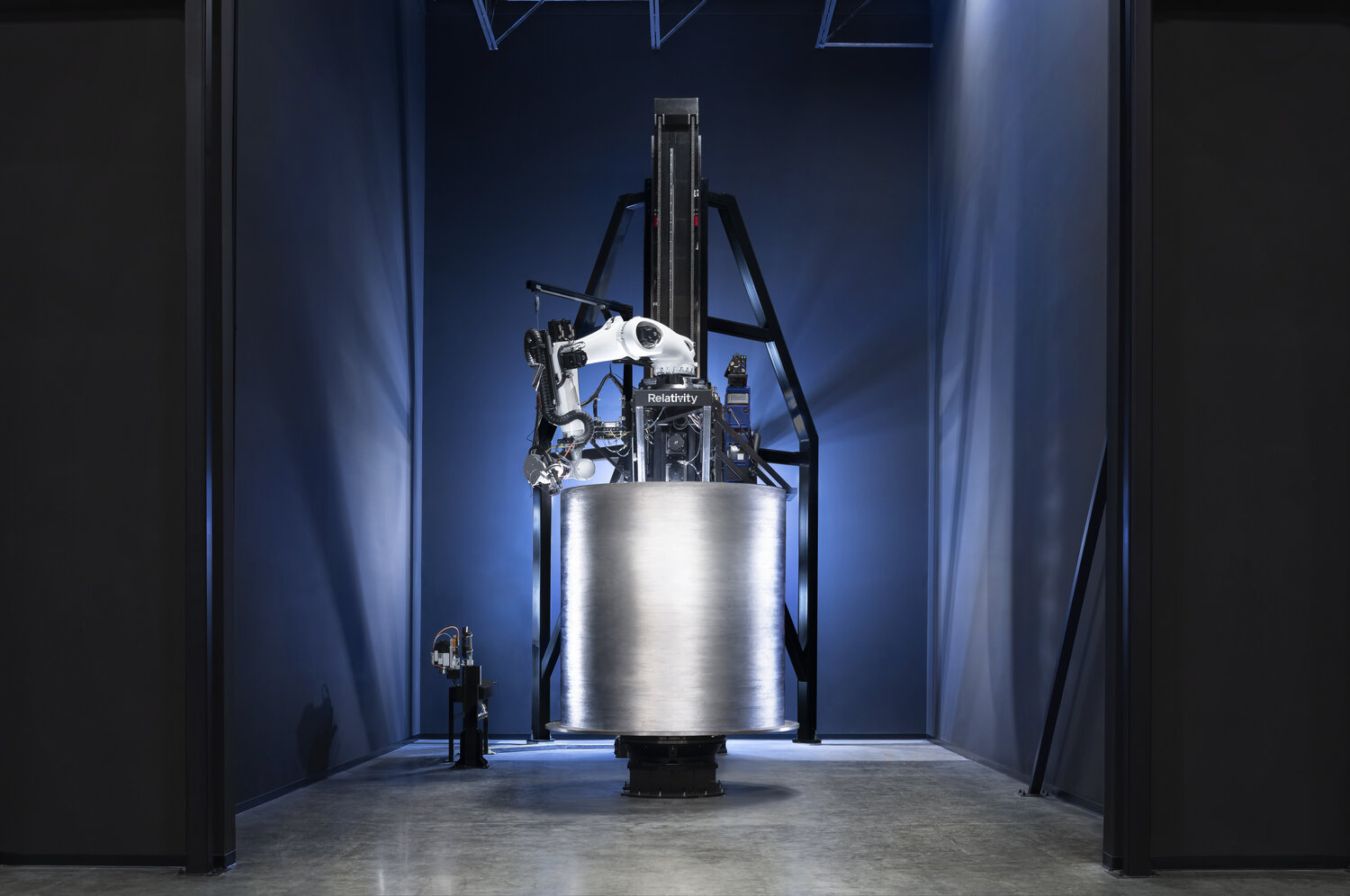- One Percent
- Posts
- 🚀 Good Luck, Have Fun
🚀 Good Luck, Have Fun
3D Printing Magic

How's it going my curious friends?
We've got a catch today. We're talking about the man himself, Tim Ellis.
The Quick and Dirty
Tim Ellis is an American aerospace engineer, a University of Southern California grad, the youngest member on the National Space Council User's Advisory Group, responsible for bringing 3D printing into Jeff Bezos' Blue Origin, and finally, the CEO & Co-Founder of Relativity Space.
Relativity Space is an American Aerospace company specializing in manufacturing 3D printed rockets for commercial orbital launch services.
The launch of their maiden flight, Good Luck, Have Fun (GLHF), is scheduled for early 2023. Sounds like an exciting year ahead. Stay posted on the exact date here.
TL;DR - Tim Ellis is a G.
Let's get to it.
Accessibility is the Lubricant to Innovation
The crux of what I'd like to discuss today is how Relativity Space is opening the floodgates to innovation in the space industry.
We can all agree there hasn't been much progress made. Why is that?
It might be because most aren't worried about having a backup plan in the case of a life-as-we-know-it-ending catastrophic event. Tbh I haven't thought about it much either so I get it and as this astronaut puts it, "it's the end of the world, not the end of the moon."

However, I have another hypothesis.
Innovation in the space industry has not been made because it's virtually inaccessible for the average person.
Only after Elon made $175.8 million from the sale of PayPal to eBay was he able to dedicate $100 million into SpaceX. Talk about a barrier to entry. Looks like only a multi, multi-millionaire or federal governments have a spot at the table.
To really drive this point home, let's take India as a case study.
"In 2009, only 17% of Indian adults possessed a bank account. Hundreds of millions of people were cut off from the formal financial system, resulting in a huge loss of productivity, tax revenue, and socio-economic development." — Tiger Feathers
Since then, India has made an insane amount of progress, and it all started by providing accessibility to the masses.
If you want a deep dive on how they made it happen, I highly suggest the piece below. Great read.
Now imagine if over 80% of Americans did not have access to a bank account. More importantly, imagine the rate of progress in America if that were the case.
There would be virtually none. The point I'm getting at is giving people access to the payment rails or to education or to housing are all prerequisites to accomplishing everything that comes after. But you'll never know unless people are granted access.
So, what does this have to do with Relativity Space?
This chart from their website encapsulates it pretty well:

The differences between Relativity's model versus the traditional model are night and day. Traditionally, building a rocket takes between 2 to 4 years, incorporates over 100,000 parts, and a clunky supply chain process. Relativity discovered the simple solution. Why not just 3D print a rocket? 100x fewer parts, 60 day build time, simplified supply chain, quicker iteration cycle, and most importantly, a LOT cheaper.
With this new kind of manufacturing, Relativity is bringing the cost curve down from the 100s of millions to the 10s of millions. This newfound, cheaper method of rocket creation and launch will inspire an entire generation of entrepreneurs to begin playing in this field.
Kudos to their team for inspiring innovation.
Valuation
The last publicly announced valuation of Relativity Space is $4.2B as of June 8, 2021. Their latest financing round was a secondary market fundraise early 2022. During secondary market rounds, shares may be re-priced, but details of the new post-money valuation are not publicly available. What I can say is, if Relativity's maiden launch is successful, its valuation will balloon almost immediately. For comparison, SpaceX is valued at $137B.
Revenue
Relativity has publicly announced they have secured $1.2B in commercial deals. These commercial launch service agreements are a testament to the faith people have in Relativity's 3D printing rocket technology and the team behind the magic.
Total Addressable Market
In an interview with Payload, Tim mentioned the TAM has historically been seven to eight billion, but from the shift from geosynchronous orbit (391,360 football fields away) to low earth orbit (8,541 football fields away) has blown up the multiple by several times. This is mainly due to the need to replenish satellites in LEO every three to eight years.

Moreover, launch operators (like SpaceX and federal space programs) are limited. The introduction of Relativity's Terran R will be inevitably met with demand.

Early Investors
Special shoutout to the Seed investors in Relativity Space.
Mark Cuban – First investor. Goes to show you the power of a cold email.
Brian Armstrong – Founder of Coinbase
Idris Mokhtarzada – Founder of Rocket Money
Lux Capital
Series A round was led by Social Capital in 2016.
Series B round was led by Playground Global in 2018.
Series C round was led by Bond Capital in 2019.
Series D round was led by Tiger Global in 2020.
Series E round was led by Fidelity in 2021.
Let's Get You Employed 💼
Stuff they're doing sound interesting? Throw your hat in the ring.
SK's Weekly Rec 🤔
Mr. Beast is a genius
2. Weekly Banger
3. Don't skip leg day
Catch y'all next time inspiration hits. Till then, chirp at me on the bird app.
Cheers,
SK – A writer with a curious mind and an appreciation for novelty.
This post and the information presented are intended for informational purposes only and are not a reflection of my employer. The views expressed herein are the author’s alone and do not constitute an offer to sell, or a recommendation to purchase, or a solicitation of an offer to buy, any security, nor a recommendation for any investment product or service. While certain information contained herein has been obtained from sources believed to be reliable, neither the author nor any of his employers or their affiliates have independently verified this information, and its accuracy and completeness cannot be guaranteed. Accordingly, no representation or warranty, express or implied, is made as to, and no reliance should be placed on, the fairness, accuracy, timeliness or completeness of this information. The author and all employers and their affiliated persons assume no liability for this information and no obligation to update the information or analysis contained herein in the future.

